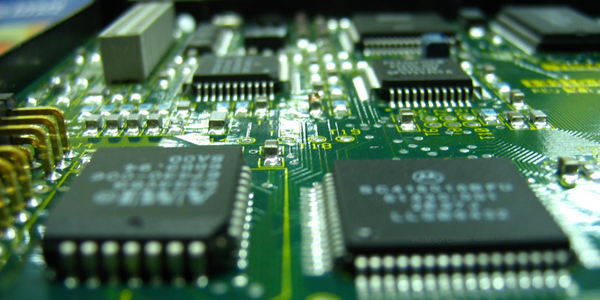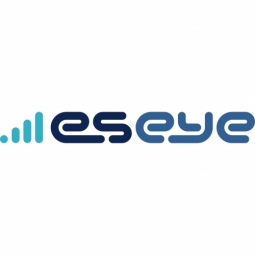
Technology Category
- Application Infrastructure & Middleware - Middleware, SDKs & Libraries
- Networks & Connectivity - Global Navigation Satellite System (GNSS)
Applicable Industries
- Electronics
- Telecommunications
Use Cases
- Inventory Management
- Transportation Simulation
Services
- Hardware Design & Engineering Services
- System Integration
The Customer
Micro Systems
About The Customer
Micro Systems S.R.L. is a specialist in cutting-edge embedded electronics solutions. They design and manufacture process control and user interface boards for original equipment manufacturers (OEM) across a variety of sectors. They also develop management software. One of their core capabilities is building complete, customised IoT ecosystems that help their customers evolve from a product-based business into a service-based business. These ecosystems integrate the required connectivity hardware and software, plus a web portal and app, into a unified solution. Micro Systems launched its first IoT project in 2014 for a customer who needed a bespoke solution that could work anywhere in the world.
The Challenge
Micro Systems S.R.L., a specialist in embedded electronics solutions, designs and manufactures process control and user interface boards for original equipment manufacturers (OEM) across various sectors. One of their core capabilities is building complete, customised IoT ecosystems that help their customers evolve from a product-based business into a service-based business. However, they faced a significant challenge when they launched their first IoT project in 2014 for a customer who needed a bespoke solution that could work anywhere in the world. The customer's new system was being sold globally, which meant that Micro Systems’ solution had to be compatible with multiple network operators across many different countries. This was a complex task, as managing the various networks and frequencies involved would be unworkable. Furthermore, the customer required a single, pocket-sized electronic board that integrated several technologies, including GPS, GSM connectivity, an M2M SIM Card, an RFID module, Wi-Fi, Bluetooth, an accelerometer, and an I/O system.
The Solution
To overcome these challenges, Micro Systems partnered with Eseye, a company that provides global IoT connectivity solutions. Eseye's AnyNet+ SIM enables any device equipped with Micro Systems’ board to connect automatically to the best available network. This solution allowed Micro Systems and its customers to operate worldwide, managing data traffic and localizing network connectivity in any market with a single device. Eseye's APIs also enabled its Connectivity Management Platform to interoperate with 3rd party enterprise applications, such as AWS IoT Core and the Micro Systems IoT platform. This allowed critical device data to be sent and received between Eseye’s platform and customers’ own management platforms, enabling them to extract value from their IoT data and futureproof projects. Furthermore, Micro Systems’ electronic boards were shipped with Eseye’s SIM card pre-installed, simplifying connectivity management for customers. Eseye also offered a single global bill combining the aggregated costs of network providers across all networks, eliminating the complexity of operating in multiple different countries.
Operational Impact
Quantitative Benefit

Case Study missing?
Start adding your own!
Register with your work email and create a new case study profile for your business.
Related Case Studies.

Case Study
Remote Temperature Monitoring of Perishable Goods Saves Money
RMONI was facing temperature monitoring challenges in a cold chain business. A cold chain must be established and maintained to ensure goods have been properly refrigerated during every step of the process, making temperature monitoring a critical business function. Manual registration practice can be very costly, labor intensive and prone to mistakes.

Case Study
Cloud Solution for Energy Management Platform-Schneider Electric
Schneider Electric required a cloud solution for its energy management platform to manage high computational operations, which were essential for catering to client requirements. As the business involves storage and analysis of huge amounts of data, the company also needed a convenient and scalable storage solution to facilitate operations efficiently.

Case Study
Leveraging the IoT to Gain a Competitive Edge in International Competition
Many large manufacturers in and outside Japan are competing for larger market share in the same space, expecting a growing demand for projectors in the areas of entertainment, which requires glamor and strong visual performance as well as digital signage that can attract people’s attention. “It is becoming more and more difficult to differentiate ourselves with stand-alone hardware products,” says Kazuyuki Kitagawa, Director of Service & Support at Panasonic AVC Networks. “In order for Panasonic to grow market share and overall business, it is essential for us to develop solutions that deliver significant added value.” Panasonic believes projection failure and quality deterioration should never happen. This is what and has driven them to make their projectors IoT-enabled. More specifically, Panasonic has developed a system that collects data from projectors, visualizes detailed operational statuses, and predicts issues and address them before failure occurs. Their projectors are embedded with a variety of sensors that measure power supply, voltage, video input/ output signals, intake/exhaust air temperatures, cooling fan operations, and light bulb operating time. These sensors have been used to make the projector more intelligent, automatically suspending operation when the temperature rises excessively, and automatically switching light bulbs. Although this was a great first step, Panasonic projectors were still not equipped with any capability to send the data over a network.









